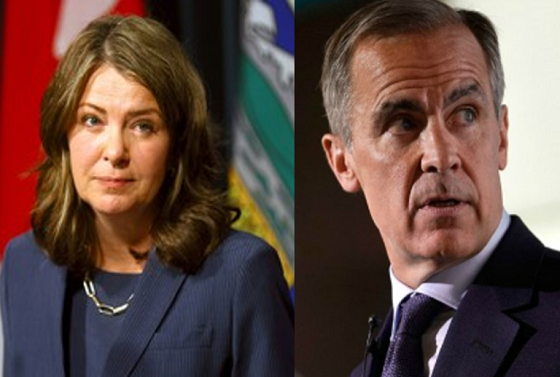National
Trudeau clinging like a ‘low-key autocrat’: Jeremy Nuttall
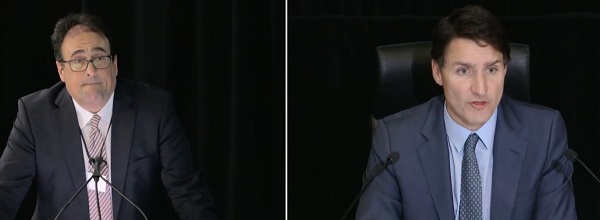
By Jeremy Nuttall
Is Canada looking like a developing nation with a corruption problem and a soft authoritarian regime?
This isn’t normal. Not even close. Even the most eccentric of Prime Ministers in any other commonwealth country would likely be licking their wounds in Ibiza by now, watching the chaos unfold from a safe distance.
Not this Prime Minister. True to form as the head of a micromanaging Prime Minister’s Office, he couldn’t bring himself to step aside. In fact, he still hasn’t.
Trudeau’s stubbornness edges dangerously close to the behavior of a low-key autocrat. He was nowhere to be seen for days as he shrugged off demands to “get lost in the snow.”
Imagine a country with a leader so deeply unpopular within his own party that members, mostly speaking anonymously out of fear, pressured him for months to step down—only for him to deflect with vague promises of “reflection” whenever the pressure mounted.
Imagine that happening against the background of the leader refusing to release documents as ordered by Parliament, at the same time the political landscape is embroiled in a foreign interference scandal. Meanwhile, food bank usage has surged, and concerns over soaring housing costs continue to grow.
Then, after a top minister leaves and drives a stake through his government, that leader circles his most loyal comrades in a bid to fend off the resignation even more before finally admitting defeat.
But even then, after the admission, said leader is still in charge and only promising to resign fully once his successor is chosen, then stopping the work of government at one of the most crucial times in recent history to give himself and his party time to get their affairs in order.
If you had that explained to you without knowing it was Canada, would you think it was a western parliamentary democracy being described, or a developing nation with a corruption problem and a soft authoritarian regime?
Democracies aren’t meant to prioritize the personal interests of government members over the country’s welfare. Yet that’s exactly what Trudeau did by requesting the prorogation of Parliament, giving his Liberals time to strategize for their own political survival.
Meanwhile, for the first few months of a new U.S. administration threatening major tariffs, Canada will be limited in its ability to address whatever happens in the House. With so much at stake, this move seems almost vindictive to a Canadian public who are now rejecting Liberal leadership.
Governor General Mary Simon’s decision to allow this—and the time she took to consider it—deserves scrutiny. The public is owed an explanation.
The Liberal Party’s troubles are not the Canadian public’s troubles, but in proroguing Parliament to deal with them, the Liberals have made them such.
Trudeau’s plan for the country is incoherent, his ministers suddenly have a lot of family obligations, and even columnists who curiously supported him for years too long are now calling for his exit.
Additionally, with him waiting until the Liberals are at their most unpopular ever, the Conservatives—set to win in a landslide no matter what—can control the narrative of the election and claim to have won on any mandate they see fit. The public could be left out of the conversation.
When tallied up, it’s all so awful.
In reality, however abnormal this is, it’s the natural course of where Canadians have allowed their country to end up.
Years of not really getting that upset about anything or realizing that the government and what it does matters are starting to show the real harms a country can be haunted by when it shrugs off the chipping away of its democratic norms by shallow and venal political operatives.
As pressure mounted on Trudeau to resign, his own MPs sheepishly asked for him to step down, an illustration that the PMO holds far too much power over caucus. One was left wondering if a breaking point would happen and MPs would make a grand gesture on behalf of Canadians.
Such a climax never arrived. My incredibly small kingdom for a handful of Liberal MPs with cojones.
The really sad part is, so far, it seems Liberal MPs missed a chance to turn the tide and more forcefully oust Trudeau from the leadership role by any means necessary, even if it meant voting against their own party.
They could have sent a message that democracy is a cumulative effort, not the whims of one person, then followed it up with reasonable changes to party policy to allow for the removal of a leader should such circumstances occur again.
What this has done is set a new low bar. The next power-crazed PMO will have this one as a blueprint to disregard the public and its welfare before pushing the limit even further.
The only bar lower at this point would be if Trudeau goes back on his promise to resign. Yes, it’s a long shot, but considering this guy’s track record of keeping promises—right up there with an absentee father in a daytime drama—I’ll really believe he’s gone when he’s gone.
This is a moment Canadians really need to examine and question if the way their government has been operating is working for them. If it isn’t, a movement for change must spring up.
Dignity, tradition, integrity, the common good—all of these principles risk becoming meaningless unless Canadians begin to take them seriously.
The Bureau is a reader-supported publication. To receive new posts and support my work, consider becoming a free or paid subscriber.
Business
The world is no longer buying a transition to “something else” without defining what that is

From Resource Works
Even Bill Gates has shifted his stance, acknowledging that renewables alone can’t sustain a modern energy system — a reality still driving decisions in Canada.
You know the world has shifted when the New York Times, long a pulpit for hydrocarbon shame, starts publishing passages like this:
“Changes in policy matter, but the shift is also guided by the practical lessons that companies, governments and societies have learned about the difficulties in shifting from a world that runs on fossil fuels to something else.”
For years, the Times and much of the English-language press clung to a comfortable catechism: 100 per cent renewables were just around the corner, the end of hydrocarbons was preordained, and anyone who pointed to physics or economics was treated as some combination of backward, compromised or dangerous. But now the evidence has grown too big to ignore.
Across Europe, the retreat to energy realism is unmistakable. TotalEnergies is spending €5.1 billion on gas-fired plants in Britain, Italy, France, Ireland and the Netherlands because wind and solar can’t meet demand on their own. Shell is walking away from marquee offshore wind projects because the economics do not work. Italy and Greece are fast-tracking new gas development after years of prohibitions. Europe is rediscovering what modern economies require: firm, dispatchable power and secure domestic supply.
Meanwhile, Canada continues to tell itself a different story — and British Columbia most of all.
A new Fraser Institute study from Jock Finlayson and Karen Graham uses Statistics Canada’s own environmental goods and services and clean-tech accounts to quantify what Canada’s “clean economy” actually is, not what political speeches claim it could be.
The numbers are clear:
- The clean economy is 3.0–3.6 per cent of GDP.
- It accounts for about 2 per cent of employment.
- It has grown, but not faster than the economy overall.
- And its two largest components are hydroelectricity and waste management — mature legacy sectors, not shiny new clean-tech champions.
Despite $158 billion in federal “green” spending since 2014, Canada’s clean economy has not become the unstoppable engine of prosperity that policymakers have promised. Finlayson and Graham’s analysis casts serious doubt on the explosive-growth scenarios embraced by many politicians and commentators.
What’s striking is how mainstream this realism has become. Even Bill Gates, whose philanthropic footprint helped popularize much of the early clean-tech optimism, now says bluntly that the world had “no chance” of hitting its climate targets on the backs of renewables alone. His message is simple: the system is too big, the physics too hard, and the intermittency problem too unforgiving. Wind and solar will grow, but without firm power — nuclear, natural gas with carbon management, next-generation grid technologies — the transition collapses under its own weight. When the world’s most influential climate philanthropist says the story we’ve been sold isn’t technically possible, it should give policymakers pause.
And this is where the British Columbia story becomes astonishing.
It would be one thing if the result was dramatic reductions in emissions. The provincial government remains locked into the CleanBC architecture despite a record of consistently missed targets.
Since the staunchest defenders of CleanBC are not much bothered by the lack of meaningful GHG reductions, a reasonable person is left wondering whether there is some other motivation. Meanwhile, Victoria’s own numbers a couple of years ago projected an annual GDP hit of courtesy CleanBC of roughly $11 billion.
But here is the part that would make any objective analyst blink: when I recently flagged my interest in presenting my research to the CleanBC review panel, I discovered that the “reviewers” were, in fact, two of the key architects of the very program being reviewed. They were effectively asked to judge their own work.
You can imagine what they told us.
What I saw in that room was not an evidence-driven assessment of performance. It was a high-handed, fact-light defence of an ideological commitment. When we presented data showing that doctrinaire renewables-only thinking was failing both the economy and the environment, the reception was dismissive and incurious. It was the opposite of what a serious policy review looks like.
Meanwhile our hydro-based electricity system is facing historic challenges: long term droughts, soaring demand, unanswered questions about how growth will be powered especially in the crucial Northwest BC region, and continuing insistence that providers of reliable and relatively clean natural gas are to be frustrated at every turn.
Elsewhere, the price of change increasingly includes being able to explain how you were going to accomplish the things that you promise.
And yes — in some places it will take time for the tide of energy unreality to recede. But that doesn’t mean we shouldn’t be improving our systems, reducing emissions, and investing in technologies that genuinely work. It simply means we must stop pretending politics can overrule physics.
Europe has learned this lesson the hard way. Global energy companies are reorganizing around a 50-50 world of firm natural gas and renewables — the model many experts have been signalling for years. Even the New York Times now describes this shift with a note of astonishment.
British Columbia, meanwhile, remains committed to its own storyline even as the ground shifts beneath it. This isn’t about who wins the argument — it’s about government staying locked on its most basic duty: safeguarding the incomes and stability of the families who depend on a functioning energy system.
Resource Works News
Business
High-speed rail between Toronto and Quebec City a costly boondoggle for Canadian taxpayers

“It’s a good a bet that high-speed rail between Toronto and Quebec City isn’t even among the top 1,000 priorities for most Canadians.”
The Canadian Taxpayers Federation is criticizing Prime Minister Mark Carney for borrowing billions more for high-speed rail between Toronto and Quebec City.
“Canadians need help paying for basics, they don’t need another massive bill from the government for a project that only benefits one corner of the country,” said Franco Terrazzano, CTF Federal Director. “It’s a good a bet that high-speed rail between Toronto and Quebec City isn’t even among the top 1,000 priorities for most Canadians.
“High-speed rail will be another costly taxpayer boondoggle.”
The federal government announced today that the first portion of the high-speed rail line will be built between Ottawa and Montreal with constructing starting in 2029. The entire high-speed rail line is expected to go between Toronto and Quebec City.
The federal Crown corporation tasked with overseeing the project “estimated that the full line will cost between $60 billion and $90 billion, which would be funded by a mix of government money and private investment,” the Globe and Mail reported.
The government already owns a railway company, VIA Rail. The government gave VIA Rail $1.9 billion over the last five years to cover its operating losses, according to the Crown corporation’s annual report.
The federal government is borrowing about $78 billion this year. The federal debt will reach $1.35 trillion by the end of this year. Debt interest charges will cost taxpayers $55.6 billion this year, which is more than the federal government will send to the provinces in health transfers ($54.7 billion) or collect through the GST ($54.4 billion).
“The government is up to its eyeballs in debt and is already spending hundreds of millions of dollars bailing out its current train company, the last thing taxpayers need is to pay higher debt interest charges for a new government train boondoggle,” Terrazzano said. “Instead of borrowing billions more for pet projects, Carney needs to focus on making life more affordable and paying down the debt.”
-

 International2 days ago
International2 days agoTrump admin wants to help Canadian woman rethink euthanasia, Glenn Beck says
-

 Local Business2 days ago
Local Business2 days agoRed Deer Downtown Business Association to Wind Down Operations
-

 COVID-192 days ago
COVID-192 days agoTrump DOJ seeks to quash Pfizer whistleblower’s lawsuit over COVID shots
-
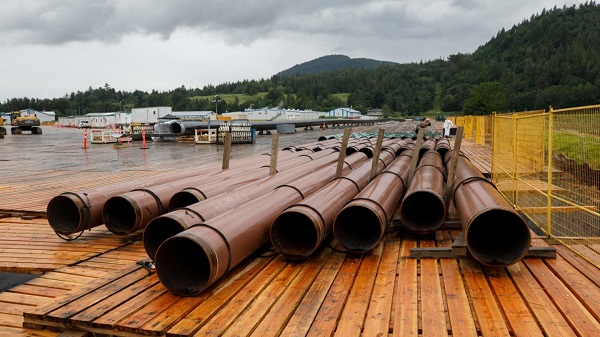
 Alberta2 days ago
Alberta2 days agoThe case for expanding Canada’s energy exports
-

 Crime2 days ago
Crime2 days agoU.S. seizes Cuba-bound ship with illicit Iranian oil history
-
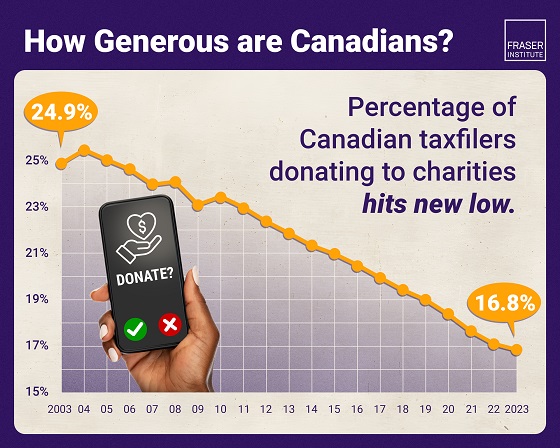
 Business1 day ago
Business1 day agoAlbertans give most on average but Canadian generosity hits lowest point in 20 years
-

 International2 days ago
International2 days agoMarjorie Taylor Greene’s ’60 Minutes’ interview reveals power struggle between populists and RINOs
-
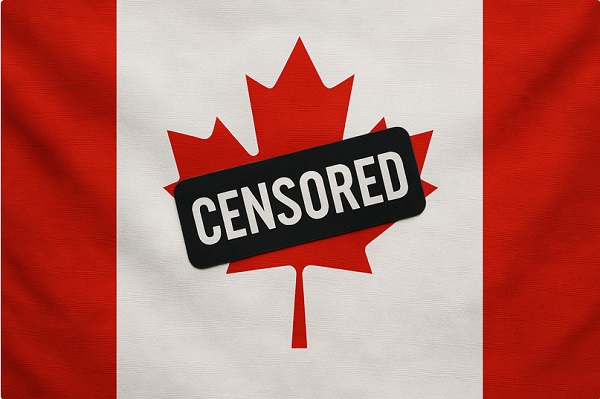
 Censorship Industrial Complex1 day ago
Censorship Industrial Complex1 day agoOttawa’s New Hate Law Goes Too Far







